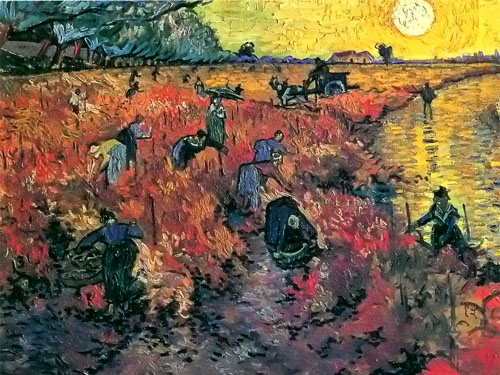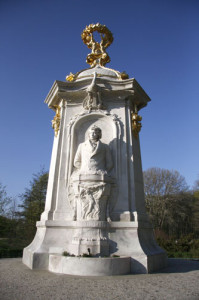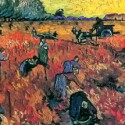Whether they are conscious of it or not, the artistic process teaches artists to solve problems creatively—with boldness, courage, and focus. Artists practice—they use the tools of their art form to carve a path forward so they can achieve their goals. In order to move forward, they confront problems that arise in the artistic process, rather than avoid them. They direct their attention and take action, developing “muscle” that helps them build confidence and endurance. For centuries, great artists have used adversity, breaking down the problems they face and developing inner strength to move their work forward. Once they break through the resistance that can come with challenge, their unyielding focus creates an incredible force of forward motion. The friction is twofold—creating momentum and finding balance within the work of art itself and overcoming internal and external snags that appear as they participate in the artistic process.

One of the world’s greatest artists, Vincent Van Gogh, sold only one painting in his entire lifetime—The Red Vineyard at Arles (The Vigne Rouge)—which is now in the Pushkin Museum of Fine Arts in Moscow. Although his tireless resourcefulness was largely overlooked when he was still alive, he still painted over 900 works of art.
Courage is being scared to death—but saddling up anyway.
~ John Wayne
 Ludwig van Beethoven, a composer who wrote one of the greatest works ever written, kept composing even after he lost his hearing when he was 26 years old. He wrote his Ninth Symphony without ever being able to hear it except in his imagination. Story tellers from the time report that at the premiere of the work, his hearing had deteriorated so much that had to be turned around to see the unrestrained applause and joy of the audience. He became so depressed that he considered committing suicide; however, in a letter known as the Heiligenstadt Testament, he states his decision to “continue living through his art.” Although Beethoven couldn’t overcome his increasing deafness, his persistence and perseverance allowed him to continue to move forward and create great works of art and ultimately fulfill his destiny as an artist.
Ludwig van Beethoven, a composer who wrote one of the greatest works ever written, kept composing even after he lost his hearing when he was 26 years old. He wrote his Ninth Symphony without ever being able to hear it except in his imagination. Story tellers from the time report that at the premiere of the work, his hearing had deteriorated so much that had to be turned around to see the unrestrained applause and joy of the audience. He became so depressed that he considered committing suicide; however, in a letter known as the Heiligenstadt Testament, he states his decision to “continue living through his art.” Although Beethoven couldn’t overcome his increasing deafness, his persistence and perseverance allowed him to continue to move forward and create great works of art and ultimately fulfill his destiny as an artist.
I think a hero is an ordinary individual who finds strength
to persevere and endure in spite of overwhelming obstacles.
~ Christopher Reeve
 Although Stevie Wonder has been blind since birth, that hasn’t stopped him from becoming one of the greatest performers in the world of contemporary music. He has received 22 Grammy awards and is regarded as one of the most influential artists of our time.
Although Stevie Wonder has been blind since birth, that hasn’t stopped him from becoming one of the greatest performers in the world of contemporary music. He has received 22 Grammy awards and is regarded as one of the most influential artists of our time.
If he had focused on his disability, none of this success could have been possible. Instead, he was a real visionary who had a deep understanding of what he could offer the world. Nothing could hold him back—his determination helped him stay on track. He used his heightened awareness of sound to create exciting and imaginative music. He refused to allow the world to define him as disabled and instead created his own way forward in the realm of music and beyond.
Let me embrace thee, sour adversity, for wise men say it is the wisest course.
~ William Shakespeare
These artists, and many others throughout history, learned to live in forward motion, moving their lives and their art forward despite what many might consider to be crippling circumstances. As a result of their creativity—their boldness, courage, focus—they took action that not only impacted the world but allowed them to fulfill their purpose. We can all use the artistic process to do the same in our daily lives, moving past pain and problems to transform our own experiences and those in the world around us.
— Pat
Sign-up for the Arts Awareness eNewsletter and receive a free gift “Three Lessons to Begin to Make Artistic Principles Work for You in Fascinating Ways.” Like Arts Awareness on facebook.
